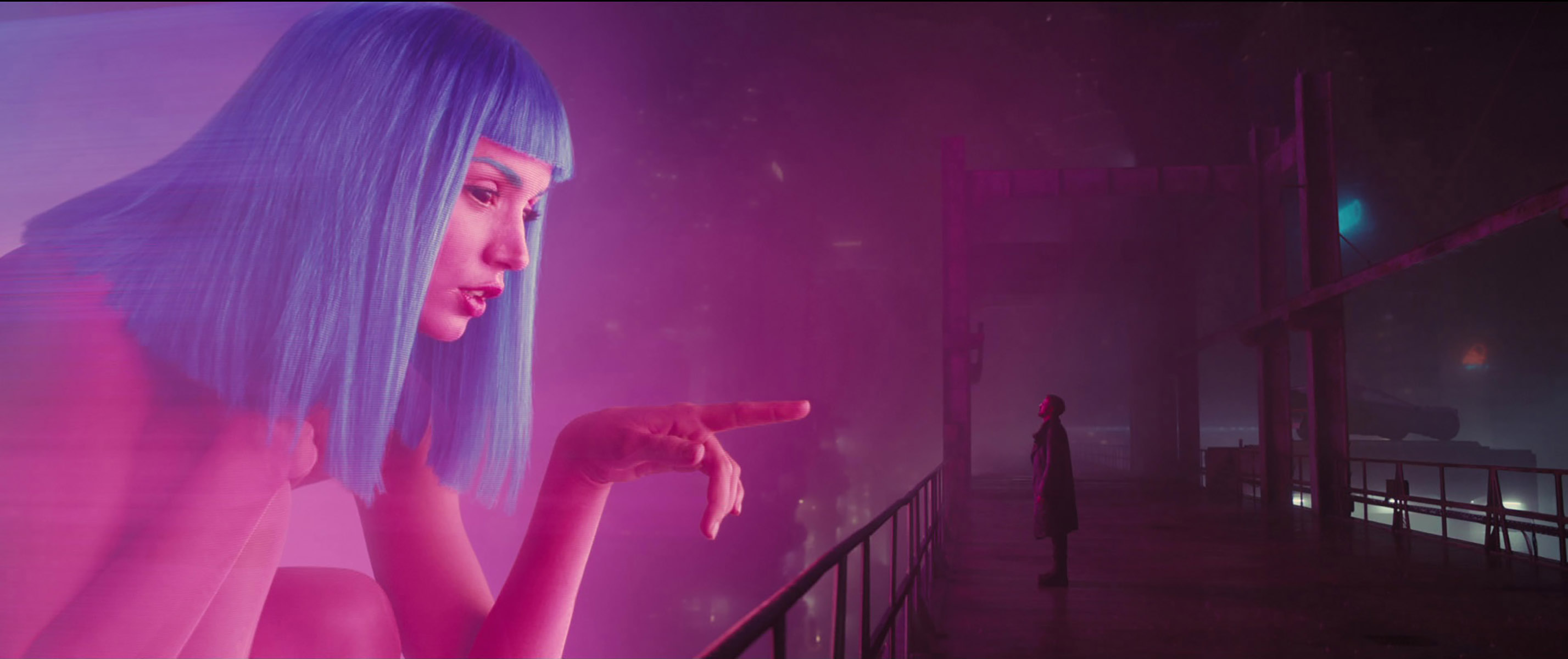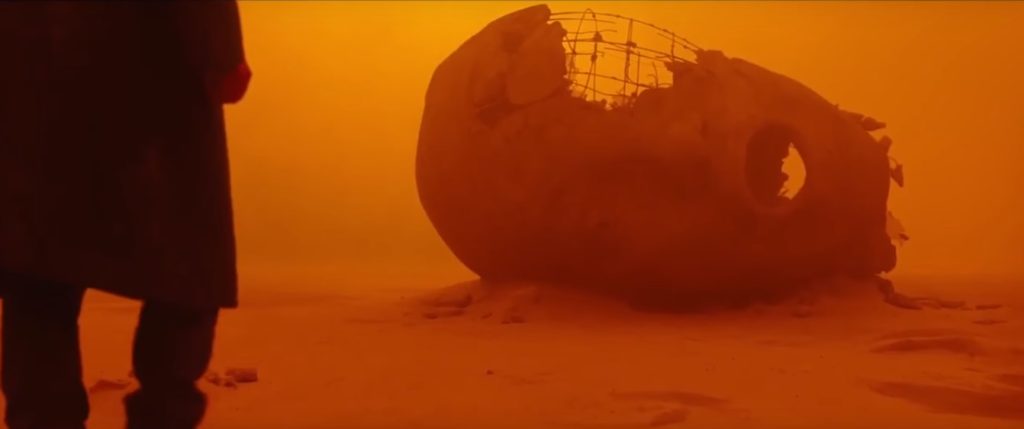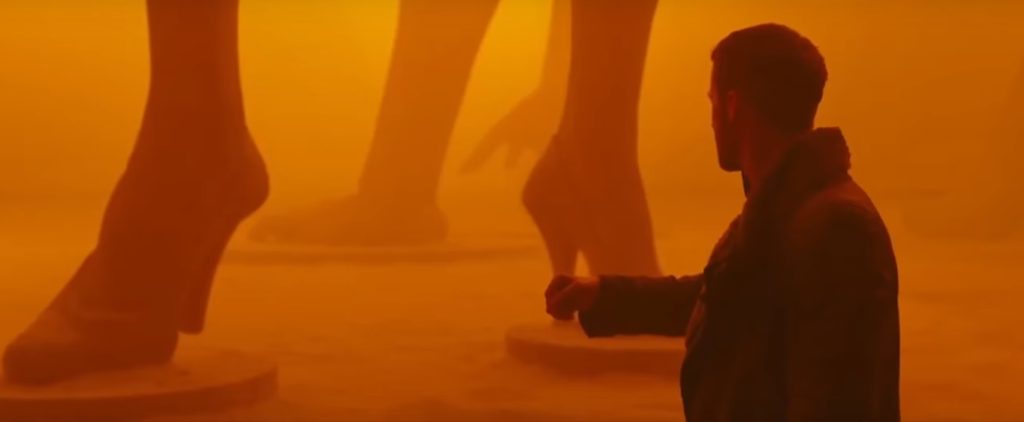SPOILERS for Blade Runner: 2049 and a possible TRIGGER WARNING for mentions of rape and sexual assault.
Hollywood is still reeling from the revelations of Harvey Weinstein’s abhorrent conduct. Even though Weinstein is being dismissed from various film boards, including the Academy, it begs the question: What about the other men in Hollywood who uphold toxic masculinity and rape culture?
Harvey Weinstein was kicked out of the Academy because we found out about him, not because Hollywood did.
Hollywood always knew about him.
— Alana Mastrangelo (@ARmastrangelo) October 14, 2017
The Academy Expelled Harvey Weinstein, But What’s Their Action Plan for Handling Other Predators in the Industry?https://t.co/9IeUBHgfcn pic.twitter.com/GSrJpOAMwB
— The Mary Sue (@TheMarySue) October 15, 2017
OK so the Academy kicked out Harvey Weinstein.
But not Roman Polanski, Bill Cosby, or Woody Allen.
Oh.
— Militia Etheridge (@MaryEmilyOHara) October 14, 2017
Mel Gibson, Roman Polanski and Bill Cosby are still members of the Academy (Woody Allen never became a member) https://t.co/6vjjaffSso
— Hollywood Reporter (@THR) October 11, 2017
Hollywood has been a hotbed for all versions of toxic masculinity, from predators to the benign “as a father of daughters” type–however that type is just as insidious. Like Martin Luther King’s abhorrence for the “white moderate” who does nothing in order to not make waves, the male moderate does and says nothing when women around him cry for help. It usually takes someone close to him (a daughter, for instance) for him to see that society treats women as second class citizens.
Toxic masculinity is not just apparent in Hollywood (and various other industries); it’s also apparent in the stories Hollywood tells. The latest blockbuster in theaters, Blade Runner 2049, is rampant with toxicity. Yet, it also wants to have its progressive cake and eat it too. But placing two women in roles of power doesn’t make it okay for every other woman in the film to be treated like a walking Barbie doll. Here’s how Blade Runner 2049 fails its women and illustrates the double standard in Hollywood.
Women as props
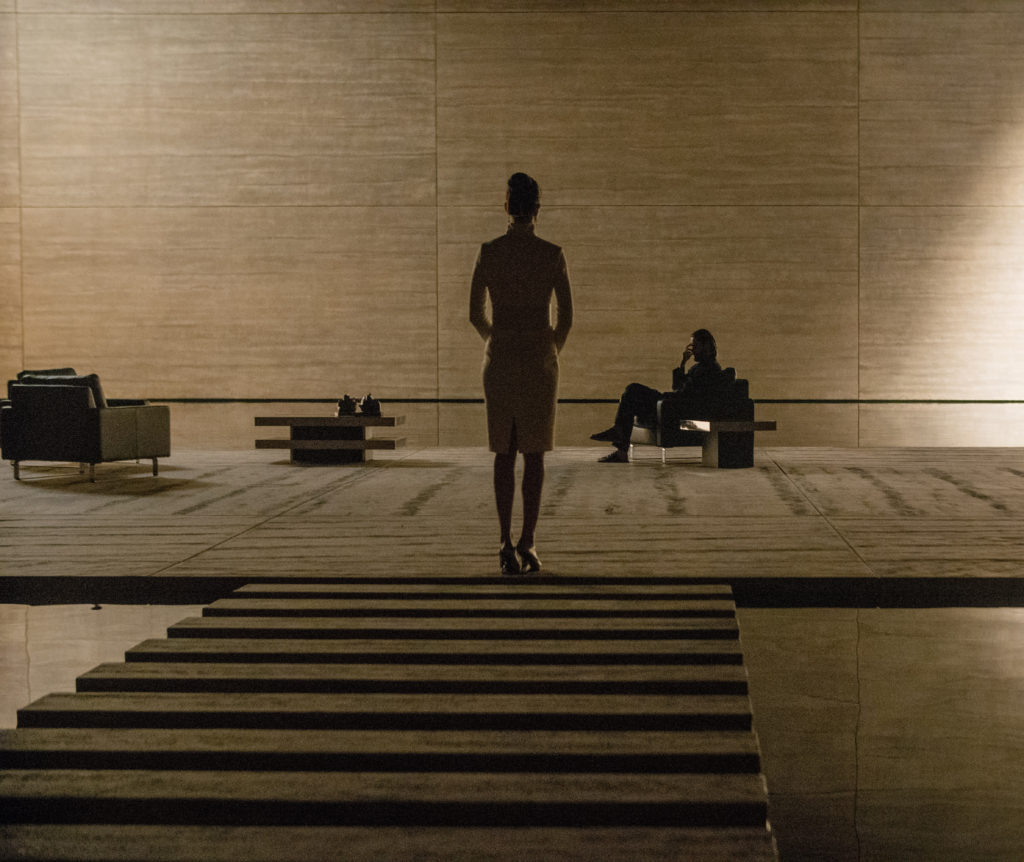
The effort Blade Runner 2049 goes to make sure women are seen as objects is astounding, especially contrasted against how much effort the film went into making sure we recognized Lt. Joshi (Robin Wright) as a “strong female character.” (To be honest, most of the likability of Joshi comes from Wright’s force as an actress, her ability to make rather static, paint-by-numbers-“I’m a hardass police boss” lines have some actual weight.)
As in the original Blade Runner, which focused its attention on Deckard and used rape as the titular “romantic” shift in the relationship between Deckard and the film’s replicant love interest Rachel, Blade Runner 2049 uses women as a backdrop for male angst and women’s pain as a tool to show male dominance.
Using women as a blank slate is best shown in the existence of Joi (Ana de Armas), a female companion anyone can buy, made by the Wallace Corporation, the company that replaced the Tyrell Corporation in replicant-making superiority. Joi is a virtual girlfriend, and while we don’t see all of Joi’s capabilities, it’s insinuated that she can take on any personality that best fits her “boyfriend.” In Joi’s introductory scene, we see that she takes the form of a 1950s housewife–the cliche of male superiority and female objectifcation–and in her daily life, she usually dresses in clothes reminiscent of the mod 1960s and 1970s. I believe, since K has a love for the 1950s and 1960s–what with him listening to swingers’ music in his apartment–K probably programmed Joi to dress this way; Joi’s actual “default mode” of dressing is in comfortable, yet cute athleisure wear. It’s quite ironic that Joi, a woman who is stripped of personal choice, is programmed to dress in the clothes of the women’s liberation.
If there’s Joi, where are the male companions for sale? It would have been more interesting to show how subjugation has become a big theme of Blade Runner‘s future, with both women and men virtual dolls available for customers. Something similar is ignored in Guardians of the Galaxy, Vol. 2. As I wrote in my review for Mediaversity Reviews:
Heterosexuality is large and in charge in Marvel’s cinematic universe, even in outer space. You’d think if it’s plausible for Peter to be in a relationship with Gamora, an alien, there should be some mention of same-sex attraction or asexuality. There was one explicit chance for different sexual preferences to be subtly brought up—a scene on a pleasure planet where sex robots available for touring ne’er-do-wells. There could have easily been male Johns paying for the services of male sex robots. Or there could have been women utilizing either male robots or female robots. But the film only shows us men with female sex robots. In fact, the reason we’re shown this planet is to reintroduce us to Peter’s questionable father figure Yondu, who is buttoning his pants after finishing a night with a female sex robot.
With the future usually thought of as a time when fears about sexual orientation have subsided, you’d think that for ever huge Joi advert, there’d be one for, let’s say, ‘Yul’ (since this world is all about mixing Russian themes in with its Japanese futurism). If I saw a naked Yul billboard, I might not be so annoyed by seeing one featuring a naked Joi. Male fragility blocks Blade Runner 2049 from engaging in any type of equitable conversation about male and female objectification–how dare a man be shown in a fetishistic way! Male fragility blocks most films, including “harmless fun” like Guardians of the Galaxy Vol. 2, from showing men a less powerful, submissive position.
The catch with the replicants and AI made by Niander Wallace (Jared Leto)–the reason his company has become the new standard in replicant-making technology–is that his replicants obey all rules. This would be an interesting thing to explore if this quality was actually explored in all replicants, male and female.
Yes, Agent K (Ryan Gosling) is supposed to be a Wallace replicant, and up until the point we meet him in the film, he has been following all rules to a T. But, as the male lead, he’s afforded the ability to go against his programming; we only see mental complexity in the men in this movie, replicant and human. Meanwhile, female robots don’t get that type of treatment. Joi, we’re led to believe, is supposed to be undergoing some type of mental progression. But it seems more like she’s fulfilling her programming by choosing to love K more intensely over the course of the film, to the point where she asks him to transport her to a portable device. When K initially refuses, scared that it might cause him to lose her forever, she does exert some power by saying if he didn’t do it, she could do it herself. But this one moment of personal power isn’t enough to overcome her other moments of mindlessness. Also, the two times she does use her own power is only in service of K, not for her own mental exploration.
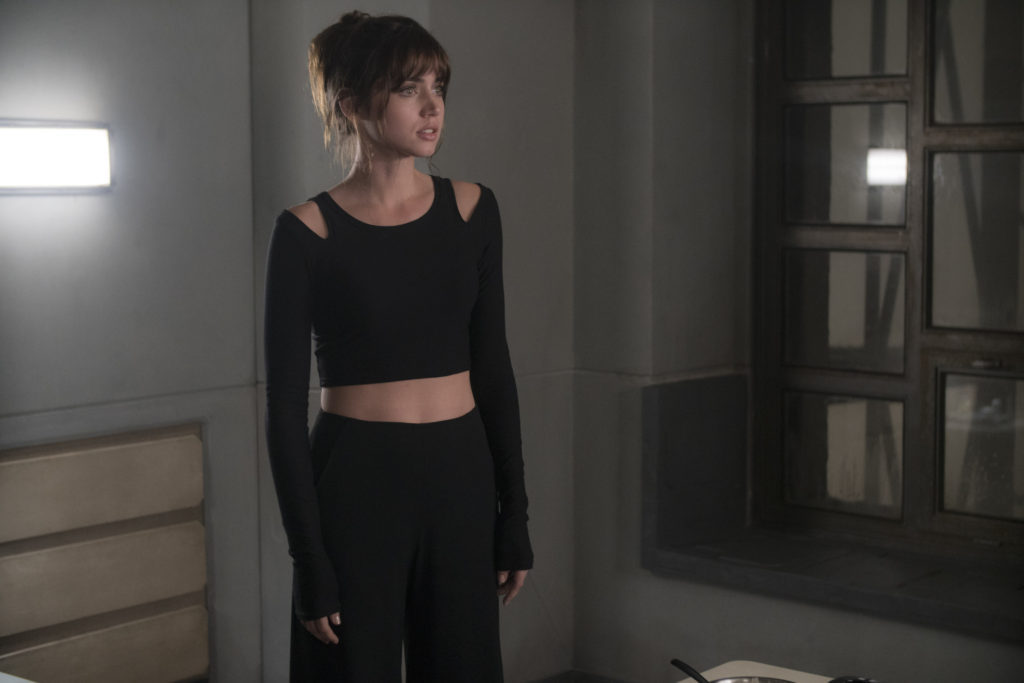
The other replicant in this film, Luv (Sylvia Hoeks), also follows the rules without being given the opportunity to challenge her role. She clearly has feelings–she sheds tears several times in this movie, indicating how she’s internally at odds with Wallace’s orders and her own place in the world. Yet, we see her dutifully follow Wallace’s directives, even after seeing Wallace gut a newly-born female replicant just to show how docile his replicants are. Why doesn’t she ever challenge Wallace? If she knows the importance of the story’s mystery figure–the child borne of a replicant–and that having that figure in the clutches of Wallace means no one any good, why doesn’t she ever team up with K? What makes her loyal to Wallace when all she seems to know is abuse?
If K can get emotional growth, why can’t Luv? She’s earned it as much as K has.
Also, Rachel is revitalized in this film, only to have her be shot mere seconds later. Her entire point in this story is to be used as an object in Wallace’s plan to turn Deckard to his side. But when Deckard doesn’t fall for it (Rachel had green eyes, not brown, he says), the fake Rachel is shot by Luv. Once again, Rachel’s pain is used only to further Deckard’s storyline. It would have been nice to know what this Rachel thought of everything happening; was she aware of how she was being used? Did she retain any of the original Rachel’s memories? What part could she have played in the burgeoning uprising? And could she have at least lived long enough to meet her daughter? Deckard gets to.
Blade Runner 2049 overcomplicates its own story by how grotesquely it uses the female form to titilate, shock, and arouse awe. Take a look at how old Las Vegas is depicted in the film:
(Screencaps)
There’s more nakedness shown in the actual film; the remnants of huge naked women dot the wasteland, helping the film achieve its R rating. Why does Las Vegas have to be proliferated with humongous naked women statues? What purpose does this serve?
As Li Lai wrote in her review for Mediaversity Reviews, the film is a “trainwreck for gender equality”:
To watch this film is to suffer through a parade of hypersexualized female bodies that are purchased as digital toys, deployed as prostitutes, or gutted through the uterus to demonstrate man’s control over the world he created. The gratuitous violence against women is never challenged by the filmmakers; on the contrary, the camera seems to delight in rendering shock value as if it will make the film harder, or edgier. Devon Maloney pens a great piece on the misogyny of Blade Runner 2049 for Wired:
“Three men manage to take up 95 percent of the emotional frame on screen, leaving little room for the women around them to have their own narratives. There’s manic pixie dream girlfriend Joi (Ana de Armas), whom K (Ryan Gosling) has literally purchased. K’s boss, Lt. Joshi (Robin Wright), berates him at work and then invites herself over, drinks his alcohol, and comes on to him. Mariette (Mackenzie Davis), the sex worker with a heart of gold, repeatedly comes to K’s aid (in every way you can imagine). Wallace (Jared Leto)’s servant Luv (Sylvia Hoeks) has the most tangible personality, yet she’s obsessed with pleasing Wallace. Even Rachael makes a cameo as a plot device for Deckard, embodying the final archetype—the martyred Madonna—of this Ultimate Sexist Megazord. Not one of these female characters voice an ambition or desire that does not pertain to their male counterparts.”
Additionally, the character of Joi, K’s digital girlfriend, employs the damaging trope of ‘Born Sexy Yesterday’ as described by Beth Elderkin:
“’Born Sexy Yesterday’ is the crafting of female characters who have the minds of children but the bodies of mature women…the idea that a sexy yet virginal woman needs a man to explain the basic fundamentals of being a person, making her dependent on him. It doesn’t matter how unremarkable he is, she’ll always find him fascinating, because she’s never known anyone else.”
The film’s obsession female sexuality doesn’t exist in a vacuum. If anything can be learned from the Harvey Weinstein scandal and other scandals that have hit Hollywood in recent weeks, it’s that women in Hollywood–on screen and off–are only given a box to express themselves inside of, while men get the entire playground. Too many men in Hollywood seem to think that women only exist to be sexual objects. Either you’re supposed to be like Joi and do whatever you can to please men in charge, or you’re meant to be a relic like the statues, forgotten or blacklisted as “hard to work with” because you decided to stand up for your voice. And even then, your body is used against you; just like how the statues showcase the barren wasteland of Las Vegas, an actress’ body can either be used as sexual currency or the reason why she doesn’t book any roles.
The conceits that women are sponges for abuse, “born sexy yesterday,” or sirens who need to be punished are myths that has been ingrained into Hollywood’s storytelling. Many of the men who tell the majority of these stories are also men who don’t know how to treat women fairly is highly troubling. This is a general statement–I’m not casting singular doubt on the folks behind Blade Runner 2049, but this film is full of that standard male-dominated thinking that believes itself to be progressive, when it’s actually regressive.
To take the heat off of Blade Runner 2049, let’s look at another filmmaker, Joss Whedon. For whatever reason (Buffy, I guess), Whedon has been lauded as a feminist writer. Even before his own scandal surfaced, Whedon’s version of feminism has never included women of color, so immediately, it was suspect. But now, it’s apparent that Whedon’s feminism wasn’t for anyone other than to serve his own agenda. Whedon’s ex-wife, Kai Cole, said Whedon only utilized his clout as a “feminist” to get closer to actresses he wanted to cheat with. According to Cole’s op-ed in The Wrap, Whedon’s own description of the women he was surrounded by flies in the face of his supposed politics.
“Fifteen years later, when he was done with our marriage and finally ready to tell the truth, he wrote me, ‘When I was running ‘Buffy,’ I was surrounded by beautiful, needy, aggressive young women. It felt like I had a disease, like something from a Greek myth. Suddenly I am a powerful producer and the world is laid out at my feet and I can’t touch it.’ But he did touch it. He said he understood, ‘I would have to lie — or conceal some part of the truth — for the rest of my life,’ but he did it anyway, hoping that first affair, ‘would be ENOUGH, that THEN we could move on and outlast it.’”
He’s blaming the women he decided to pursue for his own martial transgressions instead of taking responsibility for his actions. And yet, he’s the one chosen to write the upcoming Batgirl film, even after his draft of Wonder Woman, which is completely written from the male point of view and only highlights Diana when he wants to showcase her as a sexual object or a thing for his Steve Trevor to act against.
Should’ve have Joss Whedon write Wonder Woman SMH pic.twitter.com/mOSUWZuQMW
— Alyssa (@TheJoltaire) August 31, 2017
I’m reading Joss Whedon’s original script for Wonder Woman pic.twitter.com/r0NOIrfEew
— pumpkinziella (@Punziella) June 16, 2017
Original Joss Whedon #wonderwoman script. Embarrassment. pic.twitter.com/Kss5xo2TgK
— Eleen (@Gas_Eleen) July 7, 2017
Can someone claim to be a feminist and still see the female only in virgin/whore dynamics? Yes. Similarly, can a film like Blade Runner 2049, which tries to show women in progressive roles, still reinforce staid, tired tropes? Yes. Can Hollywood claim to be forward thinking while female actors (and male actors) get harassed and even assaulted by toxic men just for daring to do their job? Yes.
Women as interchangeable
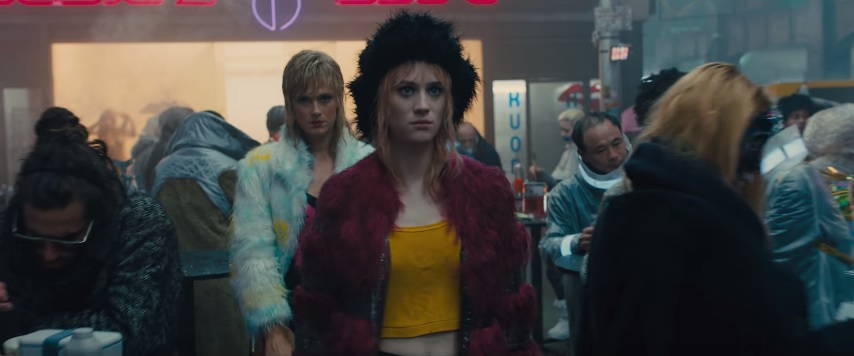
Out of the entire film, the grossest part for me was seeing Joi pay for the services of replicant prostitute Mariette (Mackenzie Davis) in order to have sex with K. The scene was supposed to be one that inspired pathos for Joi’s condition as a hologram–she can’t actually touch K–but seeing it play out was like watching an idea that seemed good in someone’s head become horrifying when enacted in real life.
The scene doubled down on the Blade Runner franchise’s lackadaisical treatment of women, this time proving that it does believe that women are not only props, but are interchangeable ones. Was K having sex with Joi or with Mariette? Does it even matter? It seems like it doesn’t, since towards the end of the movie, K caresses Mariette’s face with the same loving tenderness he tried to caress Joi with–and Joi had just “died” in the prior scene.
Again, to go back to Hollywood, the theme of interchangeability is rampant within the industry. Women are usually written as tropes in films–either as supportive girlfriends or wives, quirky “manic pixie dream girls,” “strong female characters” (which just means the woman curses and fights, but still fulfills the patriarchal demands of a sexual object), or they’re “smart,” meaning they’re usually dressed “unattractively” but still act as a type of sexual release (think of how Velma from Scooby Doo has become one of most pornographically-presented Hanna Barbera characters) or they’re dressed unattractively (and behave like a stereotypical dork) as if to say smartness in women equals ugliness.
It’s only been in recent times that films featuring women living outside of the patriarchy have been presented in ways other than the 1940s “women’s prison” films. Yet, there’s still so much further to go. Blade Runner 2049 is case in point. With as futuristic as the film’s supposed to be, everything about the film references Hollywood’s past and current treatment of women as both actresses and characters. Joi’s defining characteristic is that she’s sexy. Joshi’s main characteristic is being “tough.” Luv’s main characteristic is “loyalty.” However, K is allowed to be sexy, tough, loyal (to a point), and smart, discerning, confused, self-aware, brooding, cool, sad, disillusioned, etc. He gets a range of emotions, while the women either only serve one purpose or are used interchangeably to serve one man, as is the case with Mariette and Joi serving K and Luv and Rachel serving Wallace.
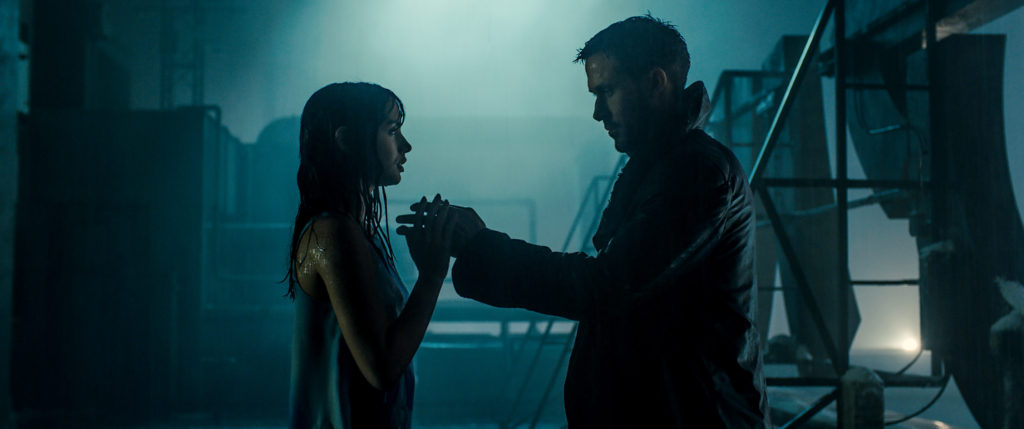
The fact that nearly every female character dies in the film is also evidence of the film’s belief that regardless of these women’s various stations in life or their motivations, they are all interchangeable and disposable. This movie reeks of the “fridged woman” stereotype, which means that women are killed in stories solely to advance a male-driven plot. Comic book writer Gail Simone has compiled a huge list of female comic book characters that have been killed or brutalized solely for the male lead to be spurred into action.
However, Blade Runner 2049 fails at even allowing he male leads to be spurred into action because of female death. The deaths of these women are treated with nihilism, as if their deaths are to show how brutal this futuristic world can be. Maybe that point would be better made if we saw more male characters be faced with certain death throughout the film; most of the male characters we meet at the beginning of the film are still alive at the very end, while most of the female characters are dead. Even though K gives up the ghost in the film’s final seconds, he still survived all the way to the ending credits, which is more than we can say for more deserving female characters.
The only male character that dies in this film is Sapper Morton (Dave Bautista). His death links him to these women; he’s the only male character in the film to show any deference to the female-made miracle he’s witnessed–Rachel giving birth to her daughter. The only man in the movie who shows any ounce of respect towards a woman gets killed because of it.
Women who are erased from their own narratives

A female character that does survive, however, is Dr. Ana Stelline (Carla Juri), but that’s only because she has to be kept in a sterile environment due to a condition (maybe a condition related to her birth). Ana is also the prodigal daughter everyone’s been looking for. However, as far as the film’s storytelling goes, is she only considered useful by the story because Deckard’s her dad, not the power she has as the first of her kind?
This might seem like nitpicking, especially since Ana inverts the audience’s trained expectation for the leading man to be the golden child. Having K realize he’s not the chosen one is actually quite satisfying–he’s built a huge mythology in his head by this point in the movie, so when he learns the truth from replicant leader Freysa (Hiam Abbass), one of the few women of power in this film, it’s fascinating to see his ego deflate before our eyes. When he realizes his only purpose is to be the usher for a female savior, he becomes disillusioned once again.
However, when K has this great realization should be when the film actually starts. The real story isn’t K’s journey from replicant-to-human-to-replicant; the real story is Ana’s. Why is it that we follow K throughout his search–which has K go around 360 degrees back to his emotional starting point–and watch him die, when the real story is happening off screen? This film should have been about Ana, not K.
Having the film follow K instead of the real focus is toxic masculinity at work. It’s subtle, but the film’s basically saying that K’s story is more important not because of any revelations he might have, but because he’s a man. That’s the only reason I can see as to why we don’t follow Ana, who has the balance of the entire world in her hands. The real mystery isn’t if K is a human; it’s how did a human (or suspected replicant) and a known replicant have a naturally-conceived replicant child? What’s the science behind this? And what would Ana do with this power once she’s made aware of her unique position? She might be alive, but why is she fridged out of her own story?
There’s a parallel here. Just like how we’re told K is more important than Ana, we’re often told men’s stories and emotions are more important than women’s. Women are often portrayed as being naive and not knowing what they want, while the man somehow magically does. This is indicative in the rape scene between Rachel and Deckard, which is played more like a love scene than the brutal act it actually is.
As Eric Haywood wrote for Roger Ebert (linked above):
Here’s the scene in a nutshell: Rachael’s with Deckard in his apartment. They’re sitting together at his piano when he tries to kiss her. She pulls back, then jumps up and races for the door (the shaky handheld camerawork emphasizing her urgency and determination to leave). She opens the door, but Deckard jumps in front of her—looking quite angry, mind you—and slams it shut with his fist, then grabs her with both hands and physically slams her against the window.
That’s our hero in action.
Then, as if all that weren’t creepy enough, he orders her to say, “Kiss me.” She doesn’t want to, so he orders her again. This time she says it. He kisses her (because, hey, she just told him to, right?), she kisses him back, and they continue as we fade to black.
To be fair, there’s an argument to be made that the scene is probably attempting a certain level of emotional complexity here. Rachael is a replicant of an advanced design. She’s had the memories of her creator’s niece implanted in her mind, leading her to believe that she’s actually human. Anyway, the idea seems to be that she and Deckard are both overcome with passion, but she’s resisting because (having been dismissively told by Deckard that she’s actually an android) she can’t trust her emotions. But the basic thrust (sorry) of the scene remains the same: Deckard wants sex, he wants it right now, and she does not. So he literally holds her hostage until she agrees to give it up.
Basically, Deckard, like so many men before him, believes he knows what Rachel wants, even though she clearly states the opposite. Her feelings don’t matter, since its Deckard’s feelings that are given precedence in the story.
If Rachel did proclaim that she was raped by Deckard, would anyone believe her? And would anyone disbelieve her because she’s a replicant, or would it be because she’s a woman?
In real life, women are often disbelieved, regardless of the positions they hold in life. They are made out to be liars. It shouldn’t be a surprise that so many women have never come forward with their stories of sexual assault and harassment, since people would only be concerned with how they somehow “asked for it.” What did they wear? What were their actions? Did they, like Rachel, say what the man wanted to hear (never mind if it was said out of coersion)? However, what’s hardly ever asked is what did the hero of the story–what did the man—do. Like too many men that populate Hollywood (and the White House), Deckard’s actions are never explored or punished. He remains our hero. Even his storyline with Rachel is remade into a noir-esque love affair in Blade Runner 2049. The truth gets turned into something more palatable. Rachel is erased.
In conclusion
What would be cool is, if the Blade Runner 2049 sequel ever gets made, that Ana becomes the lead of the story. We should have been following her all along. What I fear is that Deckard will become the lead again, and the film will be all about exploring if he is actually a replicant. This would be a huge disservice to the story, since everything hinges on Ana.
As far as films go, Blade Runer 2049 is only but one of the many films out there that do a disservice to its female characters. The film, like many before it, is also victim to the illness of toxic masculinity in the Hollywood industry. It’s not the fault of the films who suffer from this toxicity; it’s the fault of the filmmakers. Sadly, too many screenwriters, directors, and producers don’t even realize that they have a problem. Too many enjoy living high off the hog, misusing their privilege. However, until those in charge do have a wake-up call (or are replaced), women like Ana, Joi, Luv, Mariette, Joshi,and Rachel will stay in their boxes while men continue to take up all of the playground. ♦
